Cleaning & Sanitation And Disinfection Service
This service provides resources required to maintain cleanliness of all cabins, conference rooms, wash rooms, corridors, staircase, furniture, office cubicles, playground, seating chairs of stadium etc. and disinfection of any area.
Service Scope
The scope includes requires the Service Provider to provide manpower and resources for the Buyer Department to maintain cleanliness and hygiene of the mentioned area. The buyer will have option to outsource sanitation service depending upon the area or event.
Here we are classifying the Areas into following parts:
No | Area Type |
1 | Indoor Area (Like Cabins, Corridor, Halls, Medical Rooms, Service Rooms, Class Rooms, Staircase etc) |
2 | High Intensive Area (Like Washrooms, Entrance Lobbies/Receptions etc) |
3 | Outdoor Area (Like Lawns, Playground, Garages, Parking, Roads inside the campus etc) |
4 | Exterior of the Building |
5 | Seating Area (Stadiums) |
Common Areas (Entrance Lobbies/ Reception/ Conference Hall)
- Wiping of the glass doors on all the entrances.
- Cleaning the entire common area at a convenient time without hindering the occupants movement which includes Sweeping, Mopping, Scrubbing, buffing etc.
- Periodical wiping of the entire side walls – Marble / Granite / Tiles/ Wooden Panels.
- Periodical dusting or vacuuming and wiping of all fixtures and furniture in all the entrance lobbies
- Keep the signage clean and visually clear.
- Sweeping and smooth brushing of the lift floors – removal of all dirt etc. throughout the day.
- Dusting and Wiping of all the lift doors.
- Collection of all waste material and its disposal as per instructions of the Buyer Department.
- Cleaning of rugs and carpets on floors with vacuum cleaner
- Cleaning of water cooler tanks, Air conditioning grills and space underneath water coolers.
- Dusting and cleaning of fans, electrical fittings, windows, panes with glass cleaning chemicals/agents and cleaning of partitions and other furniture, paneling etc.
- Cleaning of wall, ceiling for dust, cobwebs etc.
3. Staircase And Fire Staircase
- Sweeping of all the staircases and common landings.
- Removal of dust etc. from the skirting top.
- Ensuring signage are clean and visually clear.
- Cleaning of all the fire escape doors.
- Cleaning of all the ceilings and walls for dust, cobwebs, etc.
- Thoroughly wipe all door handles, latches, tower bolts, etc.
Pantry/Cafeteria
- Cleaning of water cooler tanks and space underneath water coolers.
- Check & clean water dispenser & vending machines.
- Cleaning of refrigerators, tea/coffee vending machines and furniture if any, in the pantry.
- Cleaning of cobwebs, wax polishing of walls, floor areas etc.
- Maintain hygiene in the pantry all times.
Basement/ Parking Area/ Service Areas
- Removal of grease and dirt stains from the surfaces.
- Cleaning of machine rooms and other sensitive areas floors, walls and ceilings (in the presence of the operators in these areas). The machinery itself will not be touched by the cleaning staff since the operators will clean their own equipment cleaning of ceilings and walls so that cobwebs, stains etc. are taken care of.
- Cleaning of the car parking area.
- Cleaning of Substation, HVAC Plant Room, Pump Room, AHU Rooms, Ventilation Rooms and Other Service Rooms without affecting the Operation of the Equipment.
Restrooms
- Sweeping and mopping of the floor and keeping the floor without stains throughout the day.
- Mopping of all glazed tiles and keeping them clean.
- Washing and mopping of floor areas with detergents.
- Acid cleaning of sanitary wares without damaging their shine/lustre.
- Washing of all the urinals, closets and washbasins with mild soap solution / cleaning solutions.
- Ensuring clean and visually clear mirror throughout the day by periodic cleaning using glass cleaner.
- Replace toiletries such as fresheners, naphthalene balls, hand soap, tissue papers etc. as and when required.
- Clean all toilet fixtures and fittings.
- Urinals should have disinfectant naphthalene balls at all times.
- Clearing of the dustbins in the toilets periodically.
- Cleaning of walls, ceiling for dust, cobwebs etc.
3.6 Surroundings
- Removal of all litter, mud, dust, etc within the periphery of the building as and when felt necessary during the day.
- Taking necessary precautions to maintain the entrance to the building clean.
- Sweeping of all the roads, parking area and open area etc.
3.7 Exteriors of Building
- Clean the glass and other structures inside and outside with a suitable approved glass cleaner leaving no streaks behind.
- Clean the metal frame – dust as well as use a mild wet mop so that no stains remain on its surface.
- Extra care shall be taken of the joints between the glass and the frame so that no dust settles there.
- Thorough cleaning and buffing so that surfaces are clean and visually clear.
- Keeping the terrace clean of all litter.
- Keeping all external signage clean.
- Cleaning of external wall & Surroundings
3.8 Seating Area of Stadiums (Indoor/Outdoor)
- Sweeping of all the staircases and common landings.
- Removal of dust, stains etc. from the skirting top.
- Ensuring signage are clean and visually clear.
- Cleaning of all the fire escape doors.
- Wiping and removal of dust, stains etc of all seats or sofas and under space of seats.
- Cleaning of all the ceilings and walls for dust, beehives and cobwebs etc.
- Thoroughly wipe all door handles, latches, tower bolts etc.
Disinfection Service- Scope and Guidelines
Over and above the Service Level Agreement (SLA) which is applicable for Cleaning & Sanitatation Service , the following Guidelines issued by National Centre for Disease Control (NCDC) and Ministry of Health and Family Welfare (MoH&FW) will also constitute the SLA for Disinfection Service :
a) NCDC Guidelines:
Scope: This document aims to provide interim guidance about the environmental cleaning / decontamination in quarantine camp facilities (e.g. barracks, cubicles in rooms, offices, and toilets, etc.) where persons with potential exposure to COVID-19 have housed.
The causative agent involved in the current outbreaks of 2019-nCoV acute respiratory disease, the 2019-nCoV (genus: Betacoronavirus), belongs to the family of Coronaviridae, a large family of enveloped, positive-sense single-stranded RNA viruses. Coronaviruses are transmitted in most instances through large respiratory droplets and contact transmission, but other modes of transmission have also been proposed worldwide.
The time of survival and the conditions affecting the 2019-nCoV viability in the environment are currently unknown. According to studies assessing the environmental stability of other coronaviruses, the Severe Acute Respiratory Syndrome coronavirus (SARS-CoV) is estimated to survive several days in the environment and the Middle East Respiratory Syndrome-related coronavirus (MERS-CoV) more than 48 hours at an average room temperature (20°C) on different surfaces [1-3].
Environmental cleaning: Due to the potential survival of the virus in the environment for several days, the premises and areas potentially contaminated with the 2019-nCoV should be cleaned before their re-use, using products containing antimicrobial agents known to be effective against coronaviruses. Although there is lack of specific evidence for their effectiveness against 2019-nCoV virus, cleaning with water and household detergents and use of common disinfectant products should be sufficient for general precautionary cleaning. Tests carried out using SARS-CoV showed that sodium hypochlorite is effective.
These guidelines provide guidance for environmental cleaning in quarantine facilities housing people exposed/ potential exposure toCOVID-19 and have been adapted based on the Hospital Infection Prevention and Control guidelines drafted by NCDC in collaboration with WHO and other stakeholders.
Area/Items |
Item/Equipment |
Process |
Method/ Procedure | ||
Clinical Area | |||||
General clinical areas
Floors (clinical areas) – daily mopping | Dust mops Mop (No broom will be used for sweeping)
Detergent/ sanitizer–hot water, sodium hypochlorite(1%) Three buckets (one with plain water and one with detergent solution; one bucket for sodium hypochlorite(1%) | Sweeping Cleaning Daily mopping |
· Sweep with the dust mop or damp mop to remove surface dust. Sweep under the furniture and remove dust from corners. Gathered dust must be removed using a hearth brush and shovel. · The sweep tool should be cleaned or replaced after use.
· Prepare cleaning solution using detergent with warm water · Use the three-bucket technique for mopping the floor, one bucket with plain water and one with the detergentsolution. · First mop the area with the warm water and detergent solution. · After mopping clean the mop in plain water and squeeze it. · Repeat this procedure for the remaining area. · Mop area again using sodium hypochlorite 1% after drying the area. · In between mopping if solution or water is dirty change it frequently. · Mop the floor starting at the far corner of the room and work towards thedoor. · Clean articles between cleaning. Note: Mopping should be done twice a day | ||
Ceiling and Walls | Sweeping tool Duster Bowl/ small bucket of soap solution Plain water | Damp dusting | · Damp dusting with a long handledtool for the walls and ceiling done with very little moisture, just enough to collect thedust. · Damp dusting should be done in straight lines that overlap one another. · Change the mop head/cover when soiled. Note: Should be done once a week or after examining a suspect case | ||
| Care of mop | Hot water Detergent Sodium hypochlorite 1% | · Clean with hot water and detergent solution, disinfect it with sodium hypochlorite and keep for drying upsidedown. | ||
Doors and door knobs | Damp cloth or Sponge squeeze mop Detergent | Thorough washing | · The doors are to be washed with a brush, using detergent and water once a week (on one defined day); gently apply cloth to soiled area, taking care not to remove paint, then wipe with warm water to remove excess cleaningagent. · Door knobs and other frequently touched surfaces should be cleaned daily. |
Isolation room | Detergent/ Sanitizer– warm water, sodium hypochlorite (1%) Three buckets (one with plain water and one with detergent solution); separate bucket for sodium hypochlorite (1%) | Terminal cleaning | · Before cleaning an isolation room, liaise with infection control team for details of any special requirements. Staff will be instructed on specific cleaning procedures required with reference to · Safety uniform to be worn. · Chemicals or disinfectants to be used. · Also, if bed screen and shower screen are to be cleaned or changed, refer cleaning in isolation rooms. |
All clinical areas/ Laboratories/ Wherever spill care is required | Sodium hypochlorite (1%) Rag piece Absorbent paper Unsterile gloves Spill care kit Mop Hot water | Blood and body fluid spill care | · Wear non-sterile gloves. · For large spills, cover with absorbent paper/ rag piece · if any broken glass and sharps, using a pair of forceps and gloves, carefully retrieve.Use a large amount of folded absorbent paper to collect small glass splinters. Place the broken items into the puncture proof sharps container. · Cover the spill with sodium hypochlorite(1%)for 10–20 minutes contact time. · Clean up spill and discard into infectious waste bin, and mop area with soap and hot water. · Clean the mop and mop area with 1% sodium hypochlorite. · Wash mop with detergent and hot water and allow it to dry. |
Stethoscope | Alcohol-based rub/Spirit swab | Cleaning | · Should be cleaned with detergent and water. · Should be wiped with alcohol based rub/spirit swab before each patient contact. |
BP cuffs and covers | Detergent Hot water | Washing | · Cuffs should be wiped with alcohol- based disinfectant and regular laundering is recommended for the cover. |
Thermometer | Detergent and water Alcohol rub Individual thermometer holder | Cleaning | · Should be stored dry in individual holder. · Clean with detergent and tepid water and wipe with alcohol rub in between patient use. · Store in individual holder inverted. · Preferably one thermometer for each patient. |
Injection and dressing trolley | Detergent and water Duster Disinfectant (70% alcohol) | Cleaning | · To be cleaned daily with detergent and water. · After each use should be wiped with disinfectant. |
Refrigerators | Detergent and water Absorbent paper or clean cloth | Cleaning (weekly) | · Empty the fridge and store thingsappropriately. · Defrost, decontaminate and clean with detergent. · Dry it properly and replace the things. · Weekly cleaning is recommended. |
Area/Items | Item/Equipment | Process | Method/ procedure | ||
Lodging area | |||||
General cleaning | Detergent and | Daily mopping | · Scrub floors with hot water and detergent with using minimal water. (Do not pour thewater.) · Clean with plainwater. · Allow to dry · Hypochlorite 1% mopping canbe done. Note:Recommend general cleaning procedure should be done twice a day | ||
| warm water | floors | |||
| Mop |
| |||
Two buckets Clean | Thorough | ||||
utility gloves | washing | ||||
| Handmops |
| |||
Lockers, tables, cupboard, wardrobes, benches, shelves and cots | Damp duster Warm water Detergent Dry duster | Damp dusting | · Damp dust with warm waterand detergent. | ||
Railings | Detergent/ Sanitizer–hotwater, sodium hypochlorite 1% | Daily dusting | · Damp dust with warm water and detergent followed by disinfection with hypochlorite | ||
| Three small buckets/ or big bowls One with plain water One with detergent solution One for sodium hypochlorite 1% |
| |||
Mirrors and | Warm water | Cleaning | · Using warm water and a small quantity of detergent and using a damp cloth, wipe over the mirror and surround, then using a dry lint-free cloth, buff the mirror and glass to a clean dryfinish. | ||
Glass | Detergent water/ |
| |||
| cleaning solution |
| |||
| Damp cloth Wiper |
| |||
Sluice room Stainless steel/ Any other sink | Powder cleanser Detergent powder Wiper Cloth | Cleaning | · Sinks are to be cleaned witha powder cleanser. · Firstwetthesink.Sprinkleonalittle powder cleanser and work around the surface with a cloth, include the plughole. · Do not use the powder cleanseron dry sink. · After removing spillage and any stains, flush away with running water. Wipe down the surface of the sink. | ||
Pantry furniture | Duster | Dusting | · Dampdust | ||
Telephone | Warm water detergent solution Duster | General cleaning | · Damp dust with warm waterand detergent. · Payingspecialattentiontotheear and mouth piece and dry it properly. | ||
Desks | Damp cloth Furniture polish | Dusting | · Wipe top sides and draw handles with a damp cloth. Wooden desks should be cleaned with furniture polish and buffed to clear glows. Pen holder etc. to be cleaned ordusted. | ||
Chairs (Vinyl) | Warm water and detergent | Cleaning | · Wipe down with warm water and detergent. Remove any marks under arms and seat. Check fordamage to stoppers, if stopper require replacement, report to maintenance department. |
Furniture and fittings | Warm water and detergent Rag piece | Dusting | · Using warm water and detergent, damp dust all furniture and fittings, including chairs, stools, beds, tables, cupboards, wardrobes, lockers, trolleys, benches, shelves and storage racks, waste/ bins, fire extinguishers, oxygen cylinders, televisions window sills and dry properly. |
Bed tables, bedside lockers | Warm water and detergent Wiper Duster | Cleaning | · Wipe down over bed table. Wipe top and underneath base and stand, using warm water and detergent. Dry oncompletion. · Wipe down the bedside. Remove marks from fronts of draws and sides. Using warm water and detergent, wash the top to remove any sticky marks anddust. |
Light switches and over-bed lights | Damp cloth (never wet) Detergent Warm water | Cleaning | · Light switches to be cleaned of dust, spots and finger marks. Clean with a damp cloth (never wet) and detergent. · Over-bed lighting to be damp dusted. Clean with warm water and detergent. |
Curtains | Soft clothes Water Mild soap solution | Cleaning | · Clean with water and soap for curtains |
White clothes | Sodium hypochlorite 1% Tap water | Washing | · Should be washed under running water and soaked in 1% sodium hypochlorite for 20minutes. Note: PPE should be worn while washing soiled linen. |
Mattress and pillow covers (cloth) | Tap water | Washing | · Mattress and pillows should be covered with a reusable mattress cover. · It should be changed for each patient and when soiled sent to the laundry according to schedule. |
Mattress/ Pillow with rexin cover |
Sodium hypochlorite 1% | Terminal Damp dusting and cleaning | · If with rexin cover, can be cleaned with 1% sodium hypochlorite before use for next patient
· If routine mattress, dry it in bright sunlight for 1-2 days before using for next patient |
Normal/ without rexin |
Sunlight | Drying in sunlight | |
Water jars | Vim powder Soap and water | Cleaning | · Recommended boiled water for drinking · Water jars should be scrubbed/ cleaned with soap and water and boiled water before filling withwater. |
Areas | Agents / Toilet cleaner | Procedure | ||
Cleaning of toilets | ||||
Toilet pot/ commode | Sodium hypochlorite 1%/ Soap powder / long handle angular brush | · Inside of toilet pot/commode: · Scrub with the recommended agents and the long handle angular brush. · Outside: Clean with recommended agents; use a nylon scrubber. | ||
Lid/commode | Nylon scrubber and soap powder | · Wet and scrub with soap powder and the nylon scrubber inside and outside | ||
Toilet floor | Soap powder and scrubbing brush/ nylon broom | · Scrub floor with soap powder and the scrubbing brush · Wash with water · Use sodium hypochlorite1% dilution | ||
Tap | Nylon scrubber and soap powder | · Wet and scrub with soap powder and the nylon scrubber. | ||
Outside sink | Soap powder and nylon scrubber | · Scrub with the nylon scrubber. | ||
Showers area / Taps and fittings | Warm water Detergent powder Nylon Scrubber | · Thoroughly scrub the floors/tiles with warm water and detergent · Wipe over taps and fittings with a damp cloth and detergent. · Care should be taken to clean the underside of taps and fittings. · Taps should be dried aftercleaning | ||
Soap dispensers | Detergent and water | · Daily dusting · Should be cleaned weeklywith detergent and water and dried. | ||
Note: Dry the floors with a separate drying mop.

छात्रवृत्ति योजना
भारत देश की केंद्र सरकार ने देश में शिक्षा का स्तर सुधारने के लिए कई प्रधानमंत्री छात्रवृत्ति योजना लागु की हैं . भारत देश में कई तरह की छात्रवृत्ति योजना चलती है, जिसके अंदर अलग-अलग लाभ अलग-अलग लाभार्थी को दिए जाते है. सरकार इसमें ऐसे विद्यार्थियों का चयन करती है जो मेरिट में आये है, और जिनकी आर्थिक स्थिति मजबूत नहीं है. योजना के अंतर्गत मिलने वाली वित्तीय सहायता और योजना की पूरी निगरानी केन्द्रीय सरकार द्वारा की जाती है.....Read more

छात्रवृत्ति योजना
भारत देश की केंद्र सरकार ने देश में शिक्षा का स्तर सुधारने के लिए कई प्रधानमंत्री छात्रवृत्ति योजना लागु की हैं . भारत देश में कई तरह की छात्रवृत्ति योजना चलती है, जिसके अंदर अलग-अलग लाभ अलग-अलग लाभार्थी को दिए जाते है. सरकार इसमें ऐसे विद्यार्थियों का चयन करती है जो मेरिट में आये है, और जिनकी आर्थिक स्थिति मजबूत नहीं है. योजना के अंतर्गत मिलने वाली वित्तीय सहायता और योजना की पूरी निगरानी केन्द्रीय सरकार द्वारा की जाती है.....Read more

छात्रवृत्ति योजना
भारत देश की केंद्र सरकार ने देश में शिक्षा का स्तर सुधारने के लिए कई प्रधानमंत्री छात्रवृत्ति योजना लागु की हैं . भारत देश में कई तरह की छात्रवृत्ति योजना चलती है, जिसके अंदर अलग-अलग लाभ अलग-अलग लाभार्थी को दिए जाते है. सरकार इसमें ऐसे विद्यार्थियों का चयन करती है जो मेरिट में आये है, और जिनकी आर्थिक स्थिति मजबूत नहीं है. योजना के अंतर्गत मिलने वाली वित्तीय सहायता और योजना की पूरी निगरानी केन्द्रीय सरकार द्वारा की जाती है.....Read more

छात्रवृत्ति योजना
भारत देश की केंद्र सरकार ने देश में शिक्षा का स्तर सुधारने के लिए कई प्रधानमंत्री छात्रवृत्ति योजना लागु की हैं . भारत देश में कई तरह की छात्रवृत्ति योजना चलती है, जिसके अंदर अलग-अलग लाभ अलग-अलग लाभार्थी को दिए जाते है. सरकार इसमें ऐसे विद्यार्थियों का चयन करती है जो मेरिट में आये है, और जिनकी आर्थिक स्थिति मजबूत नहीं है. योजना के अंतर्गत मिलने वाली वित्तीय सहायता और योजना की पूरी निगरानी केन्द्रीय सरकार द्वारा की जाती है.....Read more
सिमर्स इंस्टिट्यूट के अंतर्गत प्रमुख योजनाएं
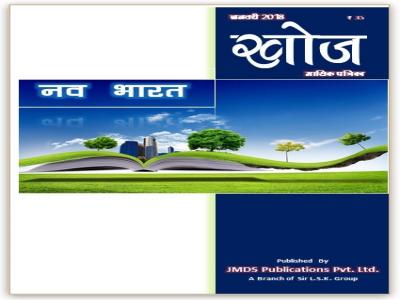
खोज मासिक पत्रिका
प्रसिद्ध गीतकार तनवीर ग़ाज़ी ने लिखा है -
"तू खुद की खोज में निकल
तू किस लिए हताश है,
तू चल तेरे वजूद की
समय को भी तलाश है|"
आज का वर्तमान युग वैज्ञानिक युग है| जो देश विज्ञान के क्षेत्र में जितनी अधिक शीघ्रता से तरक्की करेगा, वह उतनी ही शीघ्रता से संसार में विकास के परचम को लहरा सकेगा| अतः देश के प्रत्येक नागरिक को चाहिए कि वह शिक्षित एवं सम्रद्य होकर देश की प्रगति में अपना भावी योगदान दे|
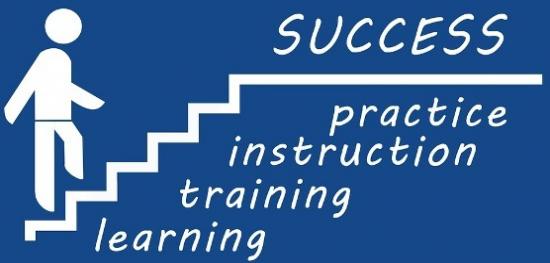
Self-Employment Awareness Program
स्वरोजगार एक मात्र ऐसा साधन है, जिसमें आपको अपने जीवन को बहुआयामी द्रष्टिकोण से देखने और उसपर चलने का अवसर प्राप्त होता है. आप अपने आप को जितना अधिक तरास पायेगें उतनी ही अधिक ऊँचाईयों पर अपने आप को पायेगें. इसीलिए कहा गया है कि ....
"खुश रहो लेकिन कभी संतुष्ट मत रहो"
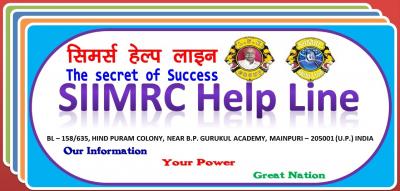
सिमर्स हेल्प लाइन
SIIMRC Help Line
यदि जीवन में लोकप्रिय होना हो तो सबसे ज्यादा ‘आप’ शब्द का, उसके बाद ‘हम’ शब्द का और सबसे कम ‘मैं’ शब्द का उपयोग करना चाहिए.
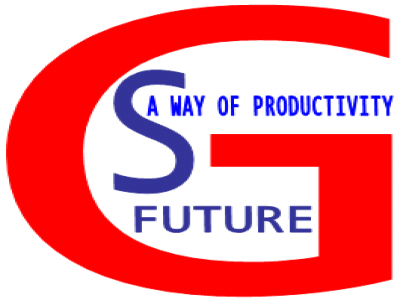
GS Future Plan
दुनिया में सबसे ज्यादा सपने तोड़े हैं इस बात ने, कि लोग क्या कहेंगे. अगर जिंदगी में सफल होना हैं तो पैसों को हमेशा जेब में रखना, दिमाग में नही
Training Vedios
M.D. Massage

प्रिय मित्रों,
सर एल० एस० के० ग्रुप व उसके द्वारा स्थापित विभिन्न संस्थानों एवं संचालित योजनाओं को सफल बनाने के लिए आप सभी का ह्रदय से आभार व्यक्त करते हुए मुक्षे अत्यन्त हर्ष हो रहा कि आप सभी ने इतने कम समय में सर एल० एस० के० ग्रुप को बुलंदियों पर पहुँचा दिया।
साथियों जैसा कि हमारे संस्थान का उद्देश्य हमेशा समाज के लिए उचित ज्ञान, कौशल, अनुशासन और पर्याप्त रूप से कुशल मानव शक्ति प्रदान करने का रहा है, हम आपको पूर्ण विश्वास दिलाते हैं कि आपके विश्वास को सदैव कायम रखते हुए, समाज के हितार्थ कार्य करते रहेंगे।
इंजी० आर० बाबू
प्रबंध निदेशक
सर एल० एस० के० ग्रुप
News Headline
HELP LINE
E-mail Id - sirlskgroup@gmail.com
Tollfree No. 1800-212-3695
Customer Support No. 9258-1446-40
REGISTERED OFFICE
Bl-158/635,
Hind Puram Colony,
Behind D.I.C. In Front of Park,
Near B.P. Gurukul Academy,
Mainpuri - 205001 (U.P.) – India
CONTECT FORM
* required
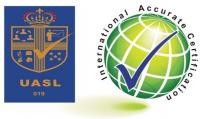
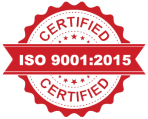


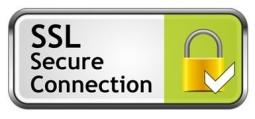
© 2025 All Rights Reserved with Sir L.S.K. Group, Mainpuri (U.P.) India Website Administrator - Er. R. Babu ǀ Powered By : BBREE Pvt. Ltd.
